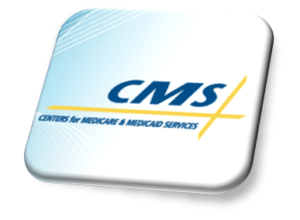 The Hospital Value-Based Purchasing program went into effect in late 2012 as an Affordable Care Act initiative that structured healthcare payment around quality instead of quantity. It impacts around 3,000 hospitals across the country, facilities that are rewarded or penalized based on their performance along certain quality measures.
The Hospital Value-Based Purchasing program went into effect in late 2012 as an Affordable Care Act initiative that structured healthcare payment around quality instead of quantity. It impacts around 3,000 hospitals across the country, facilities that are rewarded or penalized based on their performance along certain quality measures.
According to recently-released federal data, the number of facilities that will earn positive pay adjustments from Medicare in 2017 (1,600) is down by approximately 200 from last year.
Francois de Brantes, executive director of the Health Care Incentives Improvement Institute, calls the declining number of bottom-line rewards “somewhat concerning.”
Flawed approach, or assurance of quality?
In all, the positive adjustments will add up to around $1.8 billion. To facilitate the allocation of the bonuses, the Centers for Medicare and Medicaid Services (CMS) established a pool funded by a 2% reduction to base Diagnoses-related group (DRG) payments in the Inpatient Prospective Payment System (IPPS). The IPPS excludes facilities not participating in the Hospital Inpatient Quality Reporting Program; hospitals with a total number of cases below the minimum threshold; and specialty care centers like pediatric facilities, psychiatric hospitals, or oncology units.
Through performance evaluations that include patient surveys, as well as quality and efficiency measures, hospitals are given an achievement score (assessment relative to other facilities) and an improvement score (assessment relative to a hospital’s past performance). Medicare redistributes the pool money to facilities based on that performance.
This year’s flagging numbers are due in part to fewer facilities earning rewards, and also, to some hospitals’ failure to move upward in the rankings.
De Brantes sees the Hospital Value-Based Purchasing Program as flawed. He describes it as a “tournament style” approach—facilities are compared to one another, but won’t know how they’ll measure up until the tournament is over. “It’s not as if you have a specific target,” he noted. “You could meet that target, but if everyone meets that target, you’re still in the middle of the pack.”
“CMS must continue to refine the program”
Roughly half of participating hospitals will notice only nominal adjustments to base DRG payments (0.5% to -0.5%). According to CMS, the best performing facilities should expect an increase of around 4%; the hospitals that fared the poorest on the performance assessments will see payments reduced by around 2%.
Nancy Foster is the American Hospital Association’s vice president of quality and patient safety policy. She says that the results demonstrate “how progress on quality can be accelerated when pay-for-performance programs reward both achievement and improvement. However, CMS must continue to refine the program to ensure that it effectively drives quality forward for hospitals and the patients they serve.”
The CMS has announced changes to the program for 2018, one of which is an adjustment to how the performance scoring areas are weighted. Previously, the four categories (safety; efficiency and cost reduction; clinical care; and patient- and caregiver-centered experience and care coordination) were not equally weighted (30% of the score was attributed to clinical care and 20% to safety). But the change will result in an even assessment distribution along all four domains.
Also, CMS has announced that two measures from clinical care will be removed and a care transition measure will be added.
For more information/questions regarding any legal matters, please email [email protected] or call 310.203.2800.